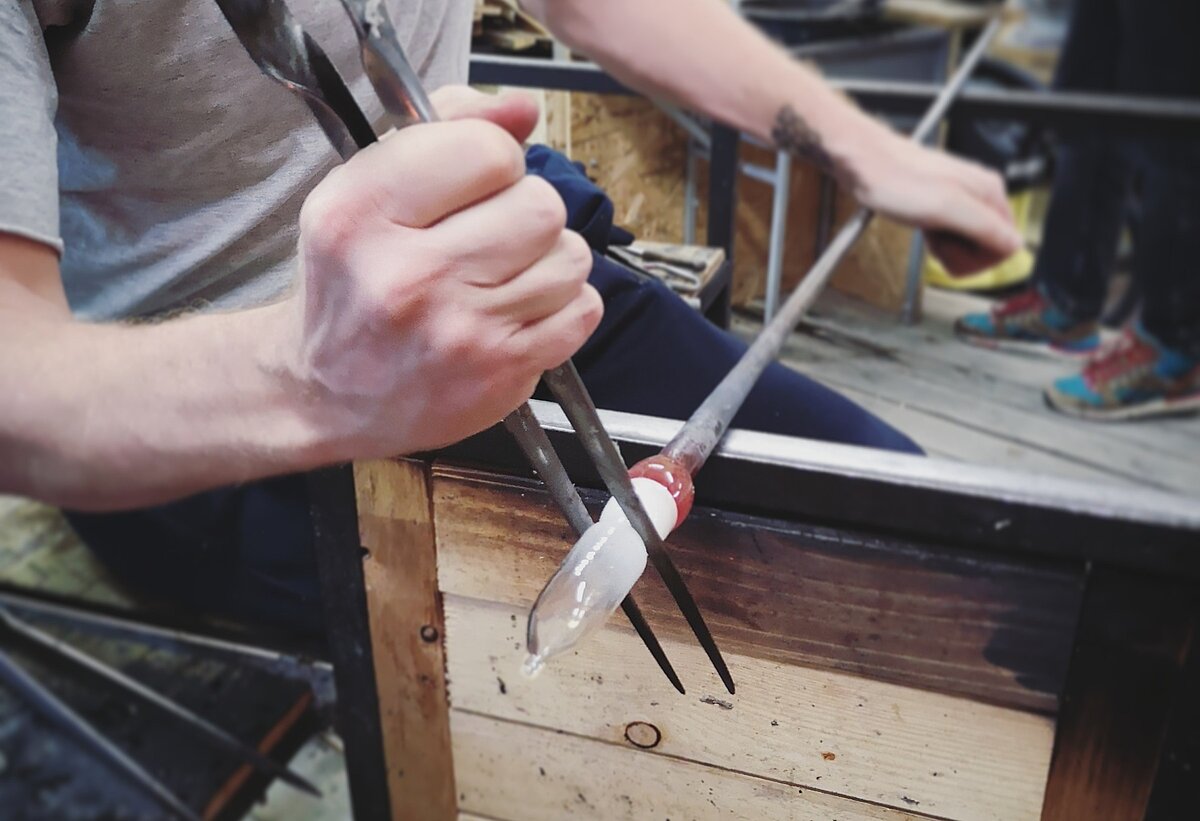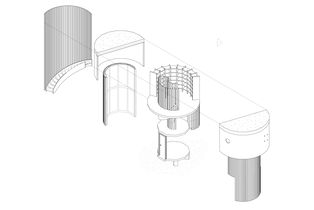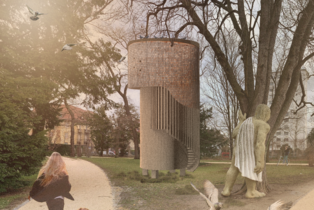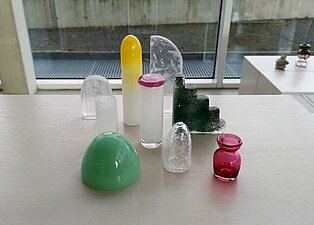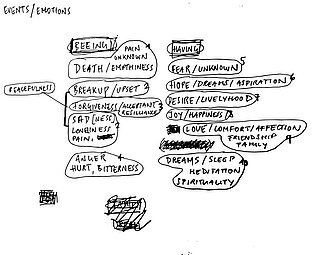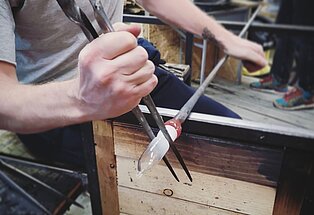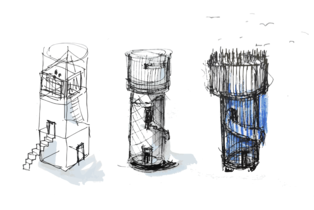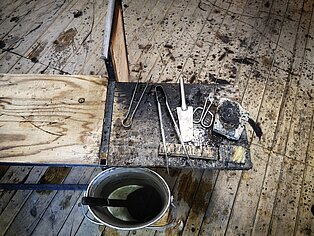Interior Scholarship | Blog 01/2020 | Lara Grandchamp
This semester, along with nine other master students, I got the opportunity to design and realize a project using a beautiful but highly complex material: glass. This workshop was made in collaboration with a small glass factory (with two glassblowers) based in Switzerland, near Bern, called Niesen glass.
Having only a couple of days to complete the project, we had to dive into the different methodologies of the making process, so as to understand all of the taking and ending required in the making before designing the pieces. Glassblowing is a very ancient technic and hasn’t changed much over the centuries.
To know more about the glassblowing history and method, check the following page: wikipedia.org/wiki/Glassblowing
Concept of my work
Intrigued by the fact that glass holds a memory within its material, I decided to push the definition of memory further. Personally, I approach the notion of time as having no begging nor end, but rather a build up of layers (memories), which are intrinsically linked, to emotions. Through one’s life, one gathers its own, personal, collection of emotions; which defines their life’s journey, their identity.
How my personal collection would look like? What if each of them would be gathered together, such as a Wunderkammer?
Going through the important events of my life, and defining the roles and repercussions each of them held, I started to play around with sizes and shapes. I found it more appropriate to start off with rather plain shapes, ones that evoke somehow playfulness albeit a certain preciousness. As for their general size, I wanted their shape to be agreeable to be held in one’s hand. Like holding a precious charm that one could carry around in his pocket.
I also found it interesting to bring together with these pieces different technic to render glass. For instance, some of the pieces were first casted into red sand. This process requires first producing the shapes of the pieces (I used clay) to imprint them in the sand. Once they are taken off, the hot glass will be poured into their print left hollow. As a result, the side of the piece facing the sand has got its granular feel on its surface. The other side, were the glass was poured, is smooth and uneven, bearing the marks of the scissor’s cut. The colour’s powder is laid first on the surface of the sand, as it isn’t possible to mix it with the clear glass beforehand. For some pieces this process worked well, for some not. That’s part of the learning process.
Another piece was done using the “cracked” process (plunging the hot glass into water before reheating it). During the first try, it exploded. The second worked out perfectly. I wished I had had more time to make more pieces, as the more time I spent in the factory watching the glass blowers working, the more I got to understand their working method. However, I am pleased with the result we got.


